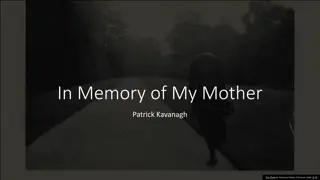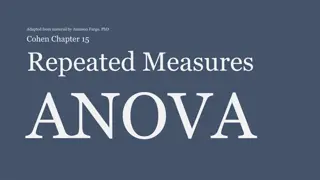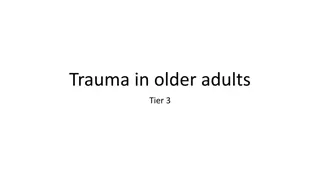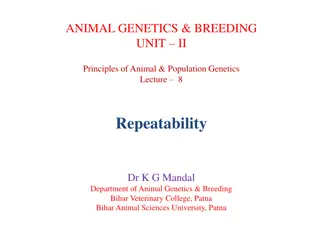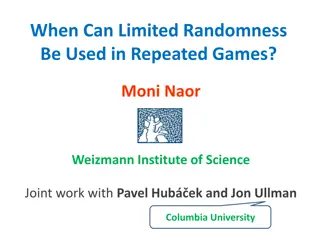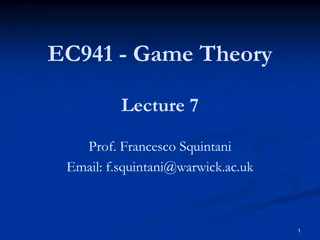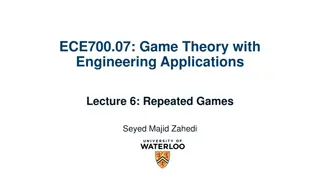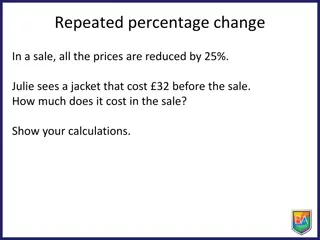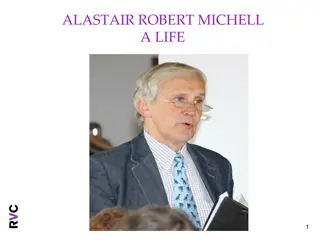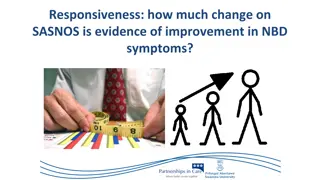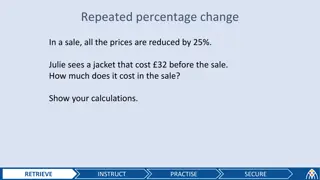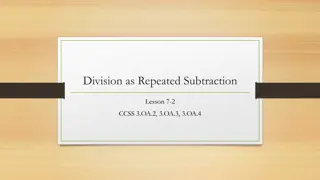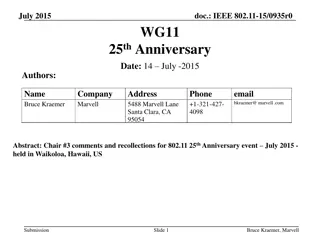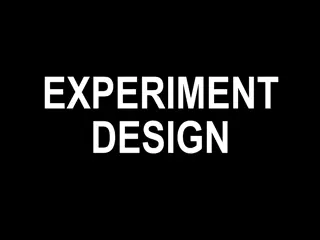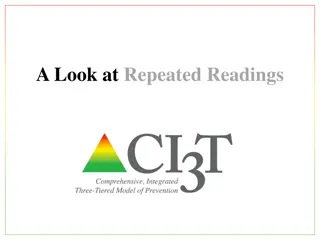Measuring Recollections of Repeated Events
Memory research on recurring events, focusing on characteristics, recall quantity, level of detail, recollection facilitation, and interviewing methods. Includes measures of details, employing various analysis techniques and criteria-based content assessments.
Download Presentation

Please find below an Image/Link to download the presentation.
The content on the website is provided AS IS for your information and personal use only. It may not be sold, licensed, or shared on other websites without obtaining consent from the author.If you encounter any issues during the download, it is possible that the publisher has removed the file from their server.
You are allowed to download the files provided on this website for personal or commercial use, subject to the condition that they are used lawfully. All files are the property of their respective owners.
The content on the website is provided AS IS for your information and personal use only. It may not be sold, licensed, or shared on other websites without obtaining consent from the author.
E N D
Presentation Transcript
HOW TO MEASURE RECOLLECTIONS OF REPEATED EVENTS? REBECCA WILL N, P R ANDERS GRANHAG, LEIF STR MWALL, & RON FISHER SARMAC XI VICTORIA, BC, CANADA, 24-27 JUNE 2015
SARMAC XI VICTORIA, BC, CANADA, 24-27 JUNE 2015 Memory for repeated events Generic and difficult to particularize (Neisser, 1981; Powell, Roberts, & Guadagno, 2007; Roberts & Powell, 2001) Important in applied settings Criminal investigations (e.g., Powell et al., 2007) Refugee status determination (UNHCR, 2013) Detainee interviews (Leins, Fisher, Pludwinski, Rivard, & Robertson, 2014) Inquiries about medical background (Mean & Loftus, 1989)
SARMAC XI VICTORIA, BC, CANADA , 24-27 JUNE 2015 Research on memory for repeated events Research questions 1. What characterizes memory for repeated events? (e.g., Neisser, 1981) 2. How many events do people recall? (e.g., Means & Loftus, 1989) 3. How much detail do people recall? (e.g., Leins et al., 2014) 4. How can we facilitate recollection? (e.g., Brubacher, Powell, & Roberts, 2014) 5. How do practioners interview about repeated events? (e.g., Brubacher, Malloy, Lamb, & Roberts, 2013) Laboratory studies (Quasi-)Experiments with controlled events (e.g., Powell & Thomson, 2003) Quasi-experiments with partly controlled events (e.g., Cohen & Java, 1995; Thompson & Mingay, 1991) Quasi-experiments with not controlled events (e.g., Means & Loftus, 1989) Field studies Analyses of real-life interviews and narratives (e.g., Brubacher et al., 2013)
SARMAC XI VICTORIA, BC, CANADA, 24-27 JUNE 2015 Measures of details What is a detail? And how to count it?
SARMAC XI VICTORIA, BC, CANADA, 24-27 JUNE 2015 Lists of details Criteria-Based Content Analysis (CBCA; Undeutch, 1982) Reality Monitoring (RM; Johnson & Raye, 1981) Aberdeen Report Judgment Scales (ARJS; Sporer, 2004) Mainly employed in research on deception detection
SARMAC XI VICTORIA, BC, CANADA, 24-27 JUNE 2015 Isolated details Details - repeated events research Number of events Omissions Additions Critical details Story grammar Before and after the event, during the event, about the perpetrator, about the victim, about the witness Context and background information Actions People Calendar dates Event duration Conversations Settings Temporal information Objects Item-level details vs. instantiation-level details Fixed vs. variable details Target details Details - forensic interview research Level of detail Clarity Length of statement Consistency Omissions Additions Critical details Number of words Spatial information Temporal information Perceptual information Time of day Repetitions Objects Subjects Spatial location of subjects or objects Number of descriptive information units Descriptions of navigating Visual details Obstacles Before and after the event, during the event, about the perpetrator Sexual vs. sensitive vs. neutral details Denials Allegations Contextual details Grammar etc etc
SARMAC XI VICTORIA, BC, CANADA, 24-27 JUNE 2015 Coding procedures (this slide is partly inspired by Sporer, 2012) Frequency counts Binary coding Likert type scales Whole account vs. parts of the account E.g. free recall vs. specific questions
SARMAC XI VICTORIA, BC, CANADA, 24-27 JUNE 2015 Important problems MANY possible codings and analyses which decisions are made priori? The lack of standardization in measures and analyses makes our field very vulnerable to questionable practices (e.g., p-hacking & HARKing) New coding procedures and materials are constantly created Waste of resources! How to compare results across studies?
SARMAC XI VICTORIA, BC, CANADA, 24-27 JUNE 2015 Essential changes Agreement needed on how to measure and analyze amount of detail Sharing of research materials Preregister our studies Make very clear which measures and coding procedures you plan to use, which parts of the statements you plan to analyze, which comparisons you plan to do and what results you expect to find These changes are needed throughout in forensic interview research but our field of repeated events can show the way!
SARMAC XI VICTORIA, BC, CANADA, 24-27 JUNE 2015 What do the present authors do except from complaining? Our materials (coding schemes, instructions to coders, etc) is available for free at Open Science Framework (OSF) Hope to provide a first suggestion of how a standardized measure of amount of detail can look like Including a protocol for preregistering forensic interview research
REBECCA WILLN Email: rebecca.willen@psy.gu.se Website: clip.org.gu.se


